HELLO HONEY NEWSLETTER JUNE 2022
HELLO HONEY NEWSLETTER JUNE 2022
HELLO HONEY NEWSLETTER JUNE 2022
HELLO HONEY NEWSLETTER JUNE 2022
HELLO HONEY NEWSLETTER JUNE 2022
HELLO HONEY NEWSLETTER JUNE 2022
HELLO HONEY NEWSLETTER JUNE 2022

Hello Honey!
NEWSLETTER
_____________________________________________
June 2022
Good Morning from Vietnam!
The Summer is on the way and it is time for some holidays.
WE take you today into the Highlands of Vietnam.
A Paradise of Flowers and Fruit and where
Our Fur major Royal Honey Sorts are harvested.
Oriental delights from the Flowers of
Rambutan, Lychee, Longan and even Coffee …
These special Honey Flavors open a total new taste in Honey Experience.
We developed them for the international Market and they
Are selected completely pure and clean from unspoiled Nature.
So follow us into the Highlands of Vietnam and learn
about our magic Four Royal VietThanh Oriental Delights
and their home in Mother Natures Nest …

Herby Neubacher
Communications
From Forests and Gardens of Vietnam’s Highlands
________________________________________________
Pure Oriental Blossom Nectars

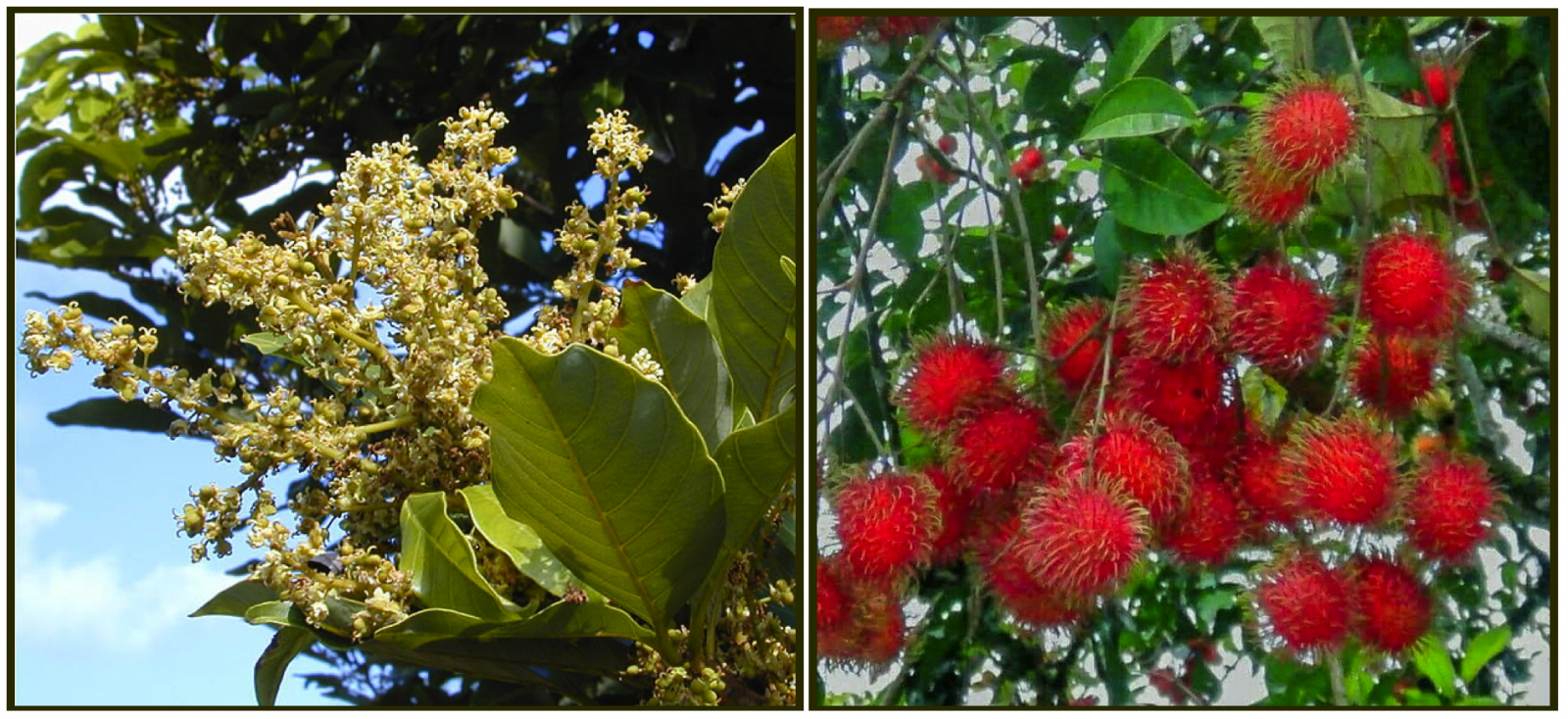
Rambutan Flower (Nephelium ramboutan) and Fruit(right) grow in Vietnam and spend Honey
The Highlands of Vietnam are a wonderful Garden of many fruit and honeys and became in the last years the central of any Oriental Delights exported to the World (picture on top).
They stretch all along the Borders of Cambodia and Lao and are separated into two different parts the Central and Western Highlands.
They contain the provinces of Đắk Lắk, Đắk Nông, Gia Lai, Kon Tum, Lâm Đồng. Vietnam’s Central Highlands are a distinct contrast from the tropical south, with an arid climate, rolling hills, and blue skies. The cool season in the Highlands runs between November and January, with temperatures averaging around 12 to 15 degrees Celsius.
In comparison with other regions in Vietnam, the Central Highlands has to encounter great difficulties in socio-economic conditions such as the skilled labor shortage, poor infrastructure, possibilities of ethnic-group conflict in a small area and a low standard of living. This area, however, has been blessed with many advantages in natural resources.
The region is home to nearly two million hectares of fertile basalt, making up for 60% of the national basalt soil, which is very suitable for industrial crops such as coffee, cocoa, pepper, mulberry, and tea and last but no least the best Honey from its Fruit Blossoms VietThanh Honey experts offer under the brand of Royal VietThanh.
Below follow the four Oriental Honey Delights offered by Royal VietThanh
Rambutan Fruit (Nephelium lappaceum) is a medium-sized tropical tree in the family Sapindaceae. The name also refers to the edible fruit produced by this tree. The Rambutan is native to Southeast Asia like in Vietnam It is closely related to several other edible tropical fruits including the Lychee, Longan, Pulasan and Mamoncillo.
Aromatic Rambutan flowers (Nephelium Rambutan) are highly attractive to Bees. Among the Diptera, Lucilia spp. are abundant and among the Hymenoptera, honey bees (Apis dorsata and A. cerana) and the sting less bee genus Trigona are the major visitors. A. cerana colonies foraging on Rambutan flowers produce large quantities of honey. Bees foraging for nectar routinely contact the stigma of female flowers and gather significant quantities of the sticky pollen from male blossoms.
Rambutan Honey is collected naturally by the honey bees from the blossom nectar of Rambutan Trees grown in the Mountainous Forest Regions of Vietnam. It has a smooth texture with fruity notes. It is preferred choice for combining with other ingredients, or enjoying straight from the jar.
Lychee Fruit (Sapindaceae spp.)is extensively grown in Vietnam and the rest of tropical Southeast Asia. They require a tropical climate that is frost-free. Lychee Flowers grow on a terminal inflorescence with many panicles on the current season's growth. The panicles grow in clusters of ten or more, reaching 10 to 40 cm holding hundreds of small white, yellow, or green flowers that are distinctively fragrant and attractive to Bees.
Lychee Honey is collected from the Lychee flower nectar. It is a very short blossom. Lychee plant is a fruit tree. Honey is extracted from the months of April to May. Lychee is light in color, thin in texture, pleasant to taste with moderate sweetness. rich in antioxidants and even helps cure cold and Asthma, boosts Immunity and treats the respiratory system
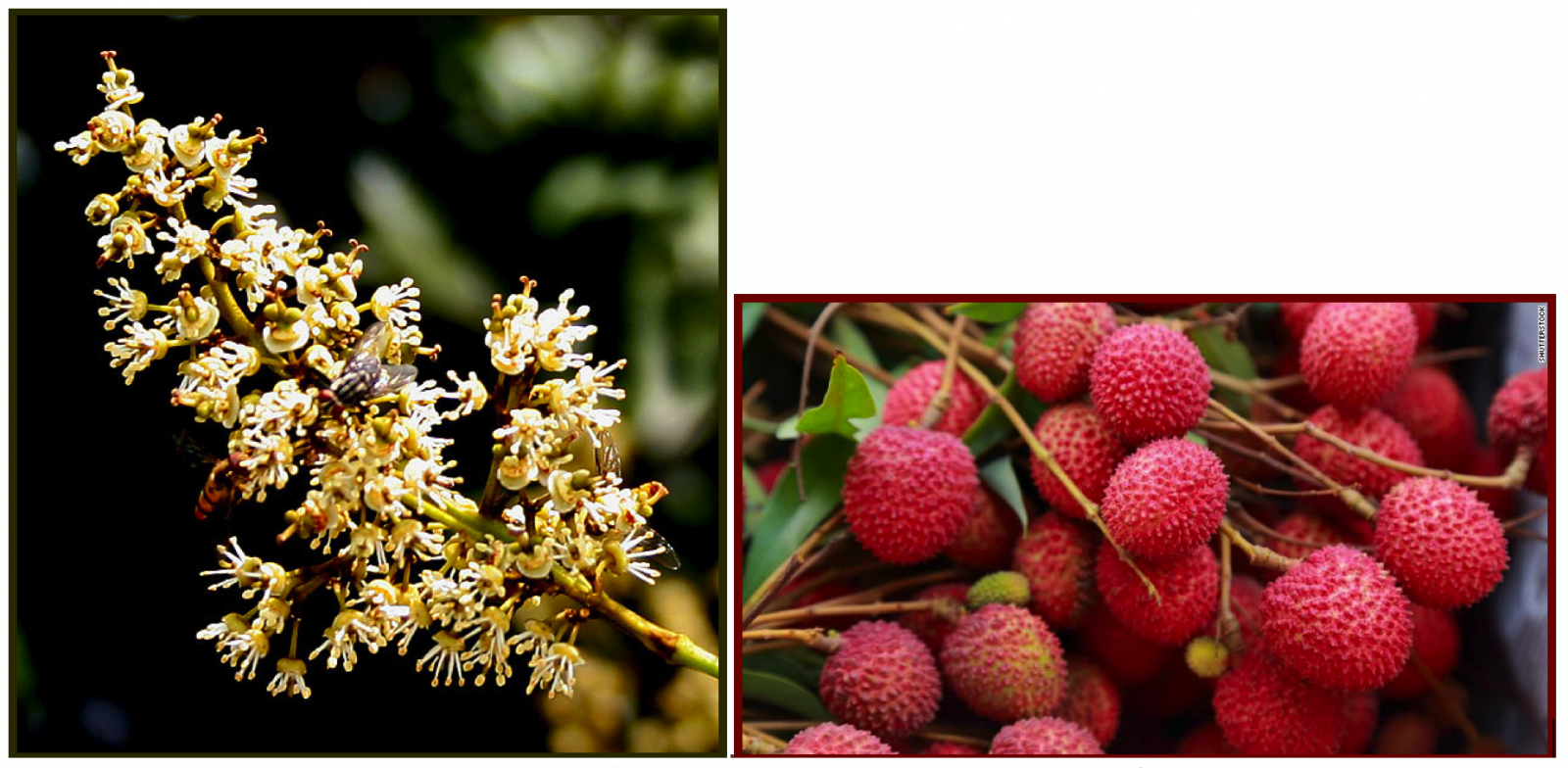
Lychee Blossom and Fruit grow in the Highlands of Vietnam
Longan Fruit (Dimocarpus longa) is a tropical tree species that produces edible fruit. It is one of the better-known tropical members of the soapberry family Sapindaceae, to which the Lychee and Rambutan also belong. The fruit of the Longan is similar to that of the Lychee, but less aromatic in taste. It is native to tropical Asia like Vietnam.
There are three Longan Flower types, distributed throughout the panicle:
Staminate (functionally male), Pistillate (functionally female), and Hermaphroditic. They are attractive to many Bees.
Longan Honey, also known as “Spring Honey” because it is primarily produced in the springtime, is a very common honey in Vietnam. It is considered one of the main monofloral Honey, along Acacia, Pineapple, Nenas, Longan, Rubber tree and Sourwood. In Vietnam this type of honey is probably the most common one.
Its Color: medium to dark amber with reddish tints
Its Flavor: fruity, redolent of peaches
it’s Taste: medium sweet
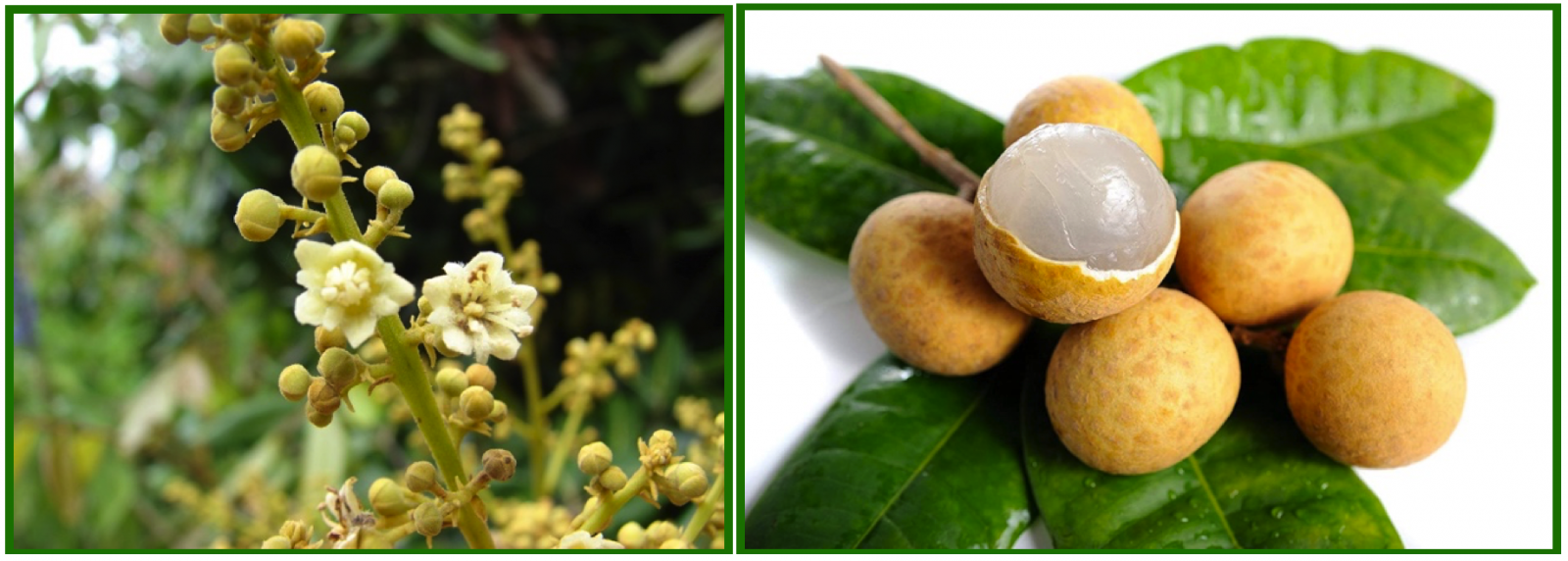
Longan Flower (Dimocarpus Longan) and Fruit – the Blossoms give a mild dew honey
Coffee Production has been a major source of income for Vietnam since the early 20th century. First introduced by the French in 1857, the Vietnamese coffee industry developed through the plantation system, becoming a major economic force in the country. After an interruption during and immediately following the Vietnam War, production rose once again after economic reforms, making coffee second only to rice in value of agricultural products exported from Vietnam.

Loved in Vietnam – Café sua da.
Coffee with sweet milk and ice
Vietnam is today the second largest producer in the world after Brazil, with Robusta coffee accounting to 97 per cent of Vietnam's total output. The vast majority of coffee in Vietnam comes from the Robusta species, a hardy plant that can grow on lower elevations. Taste-wise, coffee made from Robusta is generally stronger, nuttier, and darker than that made from Arabica, the other primary variety.
The Coffee Tree is the best famous tree in Highland provinces. In the spring, it is covered in masses of white flowers look like snow in the winter. Bees visit these flowers and collect the nectar to produce Coffee Honey. Coffee honey is sourced from highland where it is fresh air and cool. Golden color (amber) and light sweet are intense characteristics. Coffee honey keeps primary flavors of fruit juice and food
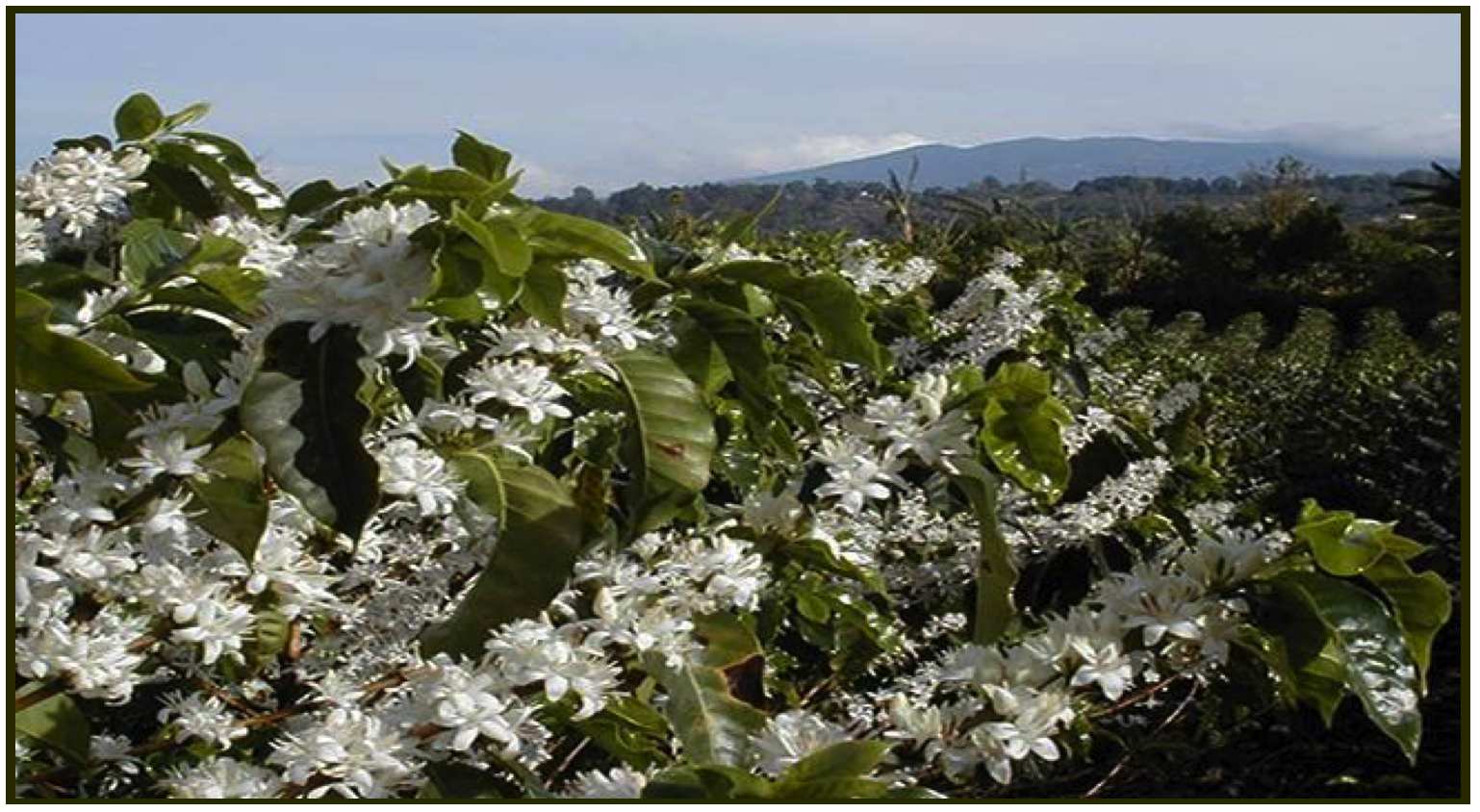
What most do not expect – the Coffee Flower passes a wonderful dark honey
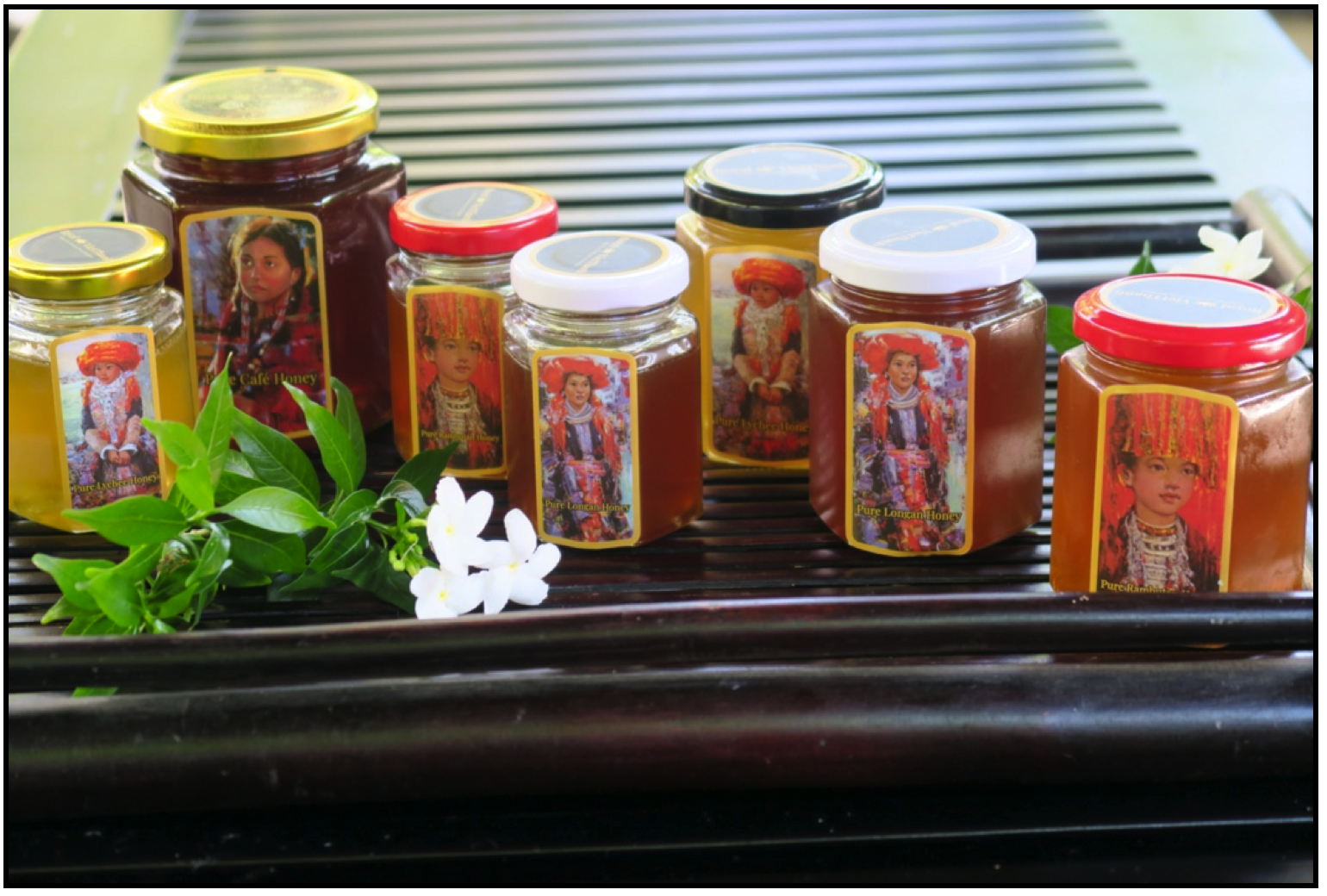
Royal VietThanh Oriental Delight Honeys: Lychee, Café, Rambutan, Longan

Brought to you from
VIET THANH
HONEY EXPERTS
Contact:
Mr. Trung Thanh Vu
Founder and Co-Owner
Headquarter: 59 Truong Son Str,
Tan Binh Ho Chi Minh City, Vietnam.
Factory: 153 Ho van Tang Str, Tan Phu Trung
Cu Chi District, Chi Minh City, Vietnam.
Direction Calling: +84-88 834 3333
Viber/WhatsApp: +84.888 34 3333.
Email: trungvu.vietthanhfood@gmail.com
Website: www.vietthanhgroup.com.vn
More posts
Hello Honey! NEWSLETTER Anuga - 26/10/2023
Hello Honey! NEWSLETTER August 2023 - 18/08/2023
Hello Honey! NEWSLETTER July 2023 - 18/08/2023
Hello Honey! NEWSLETTER June 2023 - 18/08/2023
Hello Honey! NEWSLETTER May 2022 - 18/08/2023
Hello Honey! NEWSLETTER April 2023 - 18/08/2023
Hello Honey! NEWSLETTER February 2023 - 18/08/2023
Hello Honey! NEWSLETTER February/ March 2023 - 18/08/2023





